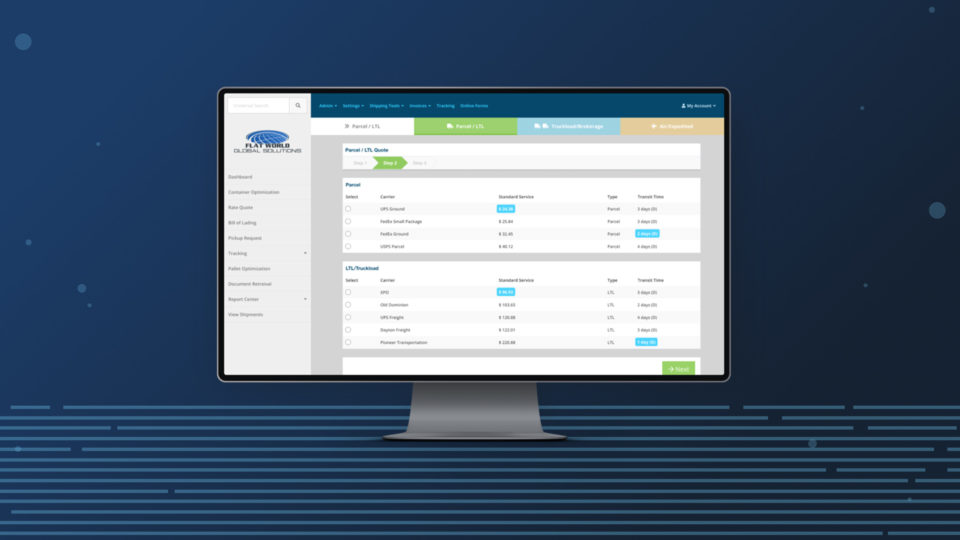Posted On January 18, 2021
It’s one of the biggest mistakes we see companies make.
Often, small businesses that ship products or parts don’t consider how their shipping efforts impact the company as a whole. Shipping is a requirement to doing business, sometimes seen as just a commodity. But that doesn’t mean it can’t be optimized—it just requires a TMS.
TMS (or transportation management system) is supply chain software that helps companies make the best decisions for their shipping needs. And for small businesses looking to grow, TMS platforms provide the competitive edge needed to get ahead.
What do Transportation Management Systems do?
TMS technology varies widely, but at the core, they give companies more visibility into carrier rates and shipping options. Like a travel-booking website but for shipping, businesses can use their TMS to view multiple quotes from different carriers or track all shipments in one location. TMS platforms can also generate bills of lading, produce shipping labels, create electronic pickup requests, and provide reporting and insights into shipping data.
Before we go any further, there’s a distinction that needs to be made. Businesses that are approaching the need for a TMS often conflate the capabilities with what they already do with their ERP (or enterprise resource planning) system. ERPs are used to manage things like accounting and inventory—and they can sometimes generate things like a bill of lading.
The distinction, however, is that transportation management systems are built specifically for tasks like generating a bill of lading, meaning they’re produced more accurately and efficiently.
You want to use the best tool for the job. You also want to keep the number of tools in check, which is why the best TMS integrate seamlessly with the ERP platform a company already uses.
When should a company start using a Transportation Management System?
The answer is different for every company, but as soon as a business recognizes that shipping costs affect the organization as a whole, it’s time to consider looking at TMS options. Here are some other scenarios for when a company should consider using a TMS:
- A growing company utilizing only one carrier. It might be saving them a lot of time but it’s not cost-effective.
- A business using multiple carriers or shipment modes (for example, parcel vs. less-than-truckload) whose employees are wasting time finding the best option for each shipment.
- A company struggling to easily obtain information throughout the transportation of products or goods at any level.
In each scenario (and we’ve seen plenty of real-life examples of all of them), a TMS is the answer, pulling and organizing the data from across carriers, shipment methods or tracking systems to provide one universal source of accurate information.
What types of TMS options are available?
There are three main types of TMS platforms, and just like knowing when to implement it, the best option is different for every company.
Early startups might look to free or low-cost subscription options, while larger enterprises might get a TMS through their contract with a third-party logistics company. Flat World offers our TMS platform, Pipeline, to all customers without a contract.
Deciding on the type of TMS is a common quandary for companies, especially in growth stages, where a low-cost subscription with limited functionality doesn’t meet the company’s needs, but a customizable TMS could put them over-budget.
Finding the right TMS for your company might take time, but it’s worth the investment: from minimizing redundancies and reducing shipping costs to repurposing labor and improving customer satisfaction, a TMS has a positive ripple effect throughout a company.
Including the bottom line.

